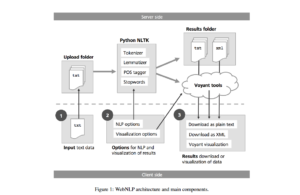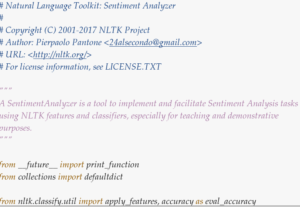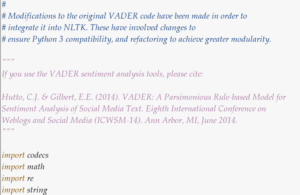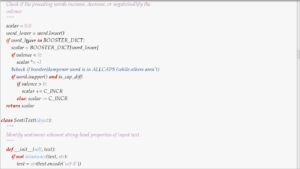Article: “Journalists as Crowdsourcerers: Responding to Crisis by Reporting with a Crowd:” https://link.springer.com/article/10.1007%2Fs10606-014-9208-z
Summary
This article is about professional journalists in a community deeply affected by Hurricane Irene, and how their role developed from that of typical journalists to leaders of a crowdsourced communication and self-advocacy movement among a population in crisis. This process was shaped by the rural surroundings (the Catskill Mountains of upstate New York) of the journalists and the community they served. In this case, the extenuating problems of uneven IT infrastructures were deeply implicated in the way they developed ad-hoc, on-the-fly content, as well as the development of provisional ethical guidelines about journalism and reporting. A major innovation from this team is their conceptualization of “human powered mesh network,” which introduces humans as “nodes” in a peer-to-peer mesh IT infrastructure.
Social media became central to the emphasis on humans in the network. In their explanation of the role of social media in emergency situations, it becomes clear that the concept of “human infrastructure” — of which the human-powered mesh network is a subcategory — could not exist without social media. Platforms that connect individuals across the Internet and gain power vis-á-vis network effects create the conditions for this “human infrastructure.”
The authors give a detailed account of how Hurricane Irene affected the Catskills region before turning to an exploration of how local journalists used the Internet during this time. They describe the use of live-blogging — real time reporting and data-sharing by journalists who had started an online local news site called The Watershed Post. The platform that developed in the wake of Hurricane Irene out of a real-time news feed on the Watershed Post — powered by software called CoverItLive and simply called “the Liveblog” — became essential to the dissemination of emergency-response information. In their methodology section, which followed the situational description, they explain that they arrived at a blend of qualitative analyses of journalist interviews and the digital record of the Liveblog.
In both the Liveblog and through speaking with the journalists, the importance of social media and amplification of the message via popular platforms like Twitter is evident. The Watershed Post editors established a presence for their Liveblog on Twitter At one point, this message is posted out on the Liveblog:
If we lose power during the storm, this live feed will continue to automatically pull in Twitter updates from other local newspapers, but we’ll be unable to post (for obvious reasons). Cross your fingers.
And since they did indeed lose power, this became critical. The redundant, always-on chain of communication supported by social media infrastructure allowed the Liveblog to balloon out. Guest comments on the blog also rose to prominence as a major source of information. It got to the point that moderating these comments became a task in and of itself, and moderators began to assume the role of public-facing authorities and gatekeepers in a situation where accuracy is of the essence.
At the end, the authors note a discrepancy between the presumptions of HCI researchers and the way information flowed organically in this case (and, by extrapolation, how it might flow in similar situations — they note the Virginia Tech tragedy in 2007 as an analogous example). Resisting strong fidelity to one side or another led them toward the hybrid concept of the human-powered mesh network: insights from both can inform our thinking on this in our roles journalists, citizens, technologists, and (more often than not these days ) some blend of the three.
Analysis
Prefatory note: this hit pretty close to home for me, because I was living in the Catskill Mountains when Hurricane Irene happened, and my roommate was working on building mesh networks. He was constantly frustrated by the geographical barriers to peer-to-peer networking (i.e., mountains!). Also, his work was disrupted when we had to evacuate our apartment…
This isn’t just a gratuitous anecdote. The human/”meatspace” (including geographical/topographical/old-infrastructure concerns) factor in IT innovations often gets left out of the conversation when we look at their revolutionary potential. Yet in this case (as is often the case with non-IT inventions), where crisis was the mother of invention, the need to design for complex and worst-case scenarios gave traction to the development of a concept (human-powered mesh networks). This has a wide span of applications — and will possibly become more important as mobile technology proliferates, and facility with disaster management and response may become more important (if we believe the science on climate change).
That’s why I think crowdsourcing is a rich topic: it is, basically, a technological concept that needs human actors en masse in order to work. With that will always come required considerations that emphasize multiplicity. Although the developers behind some major softwares don’t have to design their tech to be as accessible as possible, we can’t talk about (for example) mTurk without discussing ethics and accessibility, since it needs to work for lots of different kinds of people. Likewise, human-powered mesh networks place unique requirements on the way we think about human/physical-world factors. In emphasizing the crowd, the multiple, it necessarily becomes a more just conversation.
In a case where accuracy could mean life or death, trust is absolutely essential. The authors indicate this toward the end of their discussion. Although we have, in this class, looked toward automated means of fact-checking and verification, I’d like to propose something a bit different. The writers make this observation:
“Human infrastructuring in this case also included developing, adapting and communicating shared practices, and establishing a shared sense of ownership within the collaboration.”
With a shared sense of ownership comes (at least in theory) a shared responsibility to be accountable for the impact of the information you spread. The human-powered mesh network, and those who adopt roles of relative power within it — as comment moderators, contributors to maps, or those who Tweet/post a lot on blogs, etc — runs on the assumption of ethics and good faith among those who participate. Automating fact-checking and information accuracy is one thing, but in focusing on how we can give this role to computers, perhaps we forget that networks of humans — both before and after the digital turn — have a decent track record in spreading reliable information when it really matters.
Questions
- How does infrastructure topography change the way we think about the spread of information? Does the fact that access to Internet necessities (like electricity, working computers, and of course Internet itself) varies globally make it impossible to have a global conversation about concepts like the ones proposed in this article?
- In times of crisis, would you rather automate fact-checking or rely on humans?
- Since they discuss how useful the crowdsourced map was — are some forms of data representation better suited to crowdsourcing than others? For example, is it better (broadly construing “better;” it can mean easier, more efficient, more accurate, and so on) to crowdsource a map, or other imagistic data representations, than textual information? Does this change based on the context — e.g, it may be more effective to crowdsource textual information not in a time of emergency?
- What do we think of “infrastructure as a verb,” (“to infrastructure”), the notion that infrastructure is a constant, active process rather than a static object? What implications does this reframing have for HCI?
Read More



